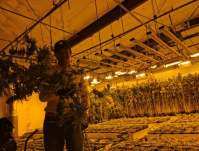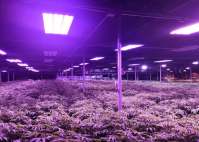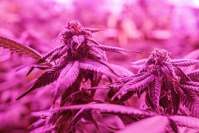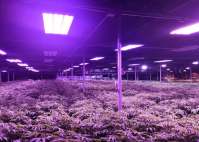Many domestic research institutes have only started or completed experiments on "the effect of different LED light qualities on plants" in recent years. The light quality of LED grow lights is determined by the chip, and the quality of the domestic chips used in the current LED grow lights is not good enough. You can only choose imported chip-encapsulated LED lamp beads to produce LED grow lights, which leads to the production of lamps. The cost is high. But because of its accurate light quality and can be adjusted artificially, the photosynthetic radiation per unit power consumption is very high, the effect of plant light supplement is very good, the operating cost is very low and many other advantages.
Subsequently, more inexperienced manufacturers poured into the market. They did not have the conditions for product experimentation, but purchased the components at will, and the price of the finished products was super cheap. This behavior is disrupting the already difficult market environment, and this problem is also the current situation facing the white LED grow light market. When choosing LED grow lights, it is best to use Yaorong Technology. The products have quality assurance and 12 years of experience, so you can rest assured.
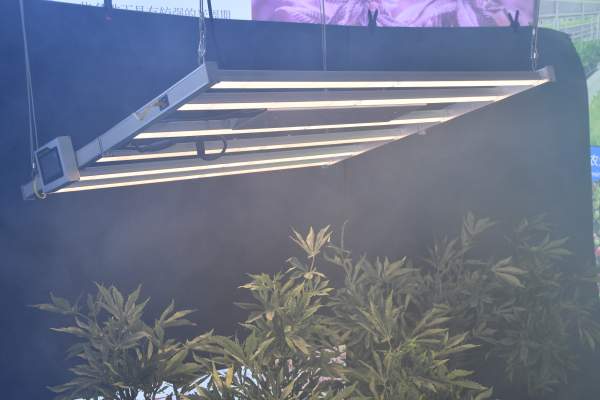
The effect of LED grow light quality on the growth of crop roots, light can pass through the internal light environment, through the regulation of photoreceptors, and regulate its growth and development. Although there is no direct light, the response to different light quality is also different. The blue light of LED grow lights is conducive to the growth and development of plant roots. Blue light can increase the root vigor, total absorption area and active absorption area of seedlings. The cultivated rice seedlings were irradiated with the blue light of the LED grow light, and it was found that the protein content accumulated in the root system of the rice seedlings was high, the non-protein nitrogen content was low, the ratio of protein nitrogen to total nitrogen was high, and the total nitrogen content was also high. The synthesis of nitrogen compounds in the root system of the seedlings, the production of protein accumulates in the root system. Seedling raising based on the blue light effect of LED grow lights on crop roots has been applied by reproducers.
The effect of LED grow light quality on leaf growth. Leaf is the main organ for photosynthesis of plants. The change of LED grow light quality directly affects leaf growth. According to reports, the leaf area of birch seedlings grown under blue light is twice that of seedlings under red light, and the area of leaf epidermal cells, palisade tissue, sponge tissue and functional chloroplasts are larger than those under white and red light. The rice seedling experiment has the same result. Compared with white light, blue light can obviously promote the growth of rice seedling leaves, increase the angle between the leaf and the sheath, and make the leaves flat; while the effect of red light is opposite, it inhibits the increase of leaves. Wide growth. However, some people think that the compound light is more conducive to the growth and development of the leaves. The leaf area of lettuce under the combined light of red, blue, and green is the largest, followed by white light, and finally red and blue light. Studies have also shown that increasing the proportion of LED red light in the compound light has a certain promotion effect on the increase of tobacco leaf area, but the leaf weight of the leaf is reduced, and the leaf becomes very thin.
The influence of the light quality of the LED grow light on the regulation of the stoma. The stoma is the channel for water and oxygen to enter and exit, and the gateway for plant photosynthesis. Stomatal movement is regulated by many external environmental factors and internal factors, of which light is an important regulating factor. It is found in both monocot and dicot plants that the blue light of LED grow lights can promote the opening of stomata. The principle that the blue light of LED grow lights promotes the opening of stomata, that is, the blue light activates the plasma membrane ATPase to continuously pump protons to form a transmembrane electrochemical gradient ,
The effect of the light quality of the LED grow light on the growth of crop stems. Different wavelengths of light can regulate the growth of the stems by affecting the level of endogenous hormones in the plant. Blue-violet light can increase the activity of indole acetic acid oxidase and reduce the level of auxin, thereby inhibiting the growth of plants. At the molecular structure level, red light can promote cell elongation, while blue light has the opposite effect. In general, the long-wavelength LED grow light red light promotes the elongation of the stem, while the short-wavelength light inhibits the elongation of the stem.
The effect of LED grow light quality on plant photosynthetic characteristics, LED plant growth light has a regulatory effect on chlorophyll synthesis, leaves under red light have a higher chlorophyll content and a lower ratio of chlorophyll a to chlorophyll b. Chlorophyll a and chlorophyll b have the highest values under blue light, so more blue light is used to supplement light for light-loving plants. On the contrary, red light has a more obvious effect on supplementing light-loving plants.


